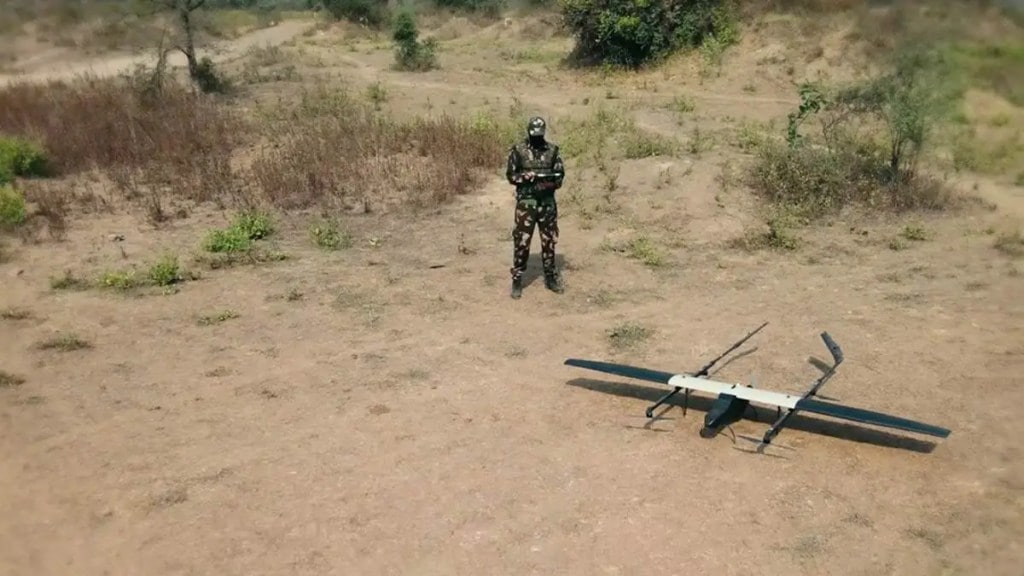The Defence Research and Development Organisation (DRDO) and Hindustan Aeronautics (HAL) are gearing up to boost drone capabilities for the Indian armed forces. We take a look at some of the key projects which are under development.
TAPAS-BH
Tapas-BH is the answer to India’s quest for ISTAR (Intelligence, Surveillance, Target Acquisition, Tracking, and Reconnaissance) requirements. TAPAS-BH is a Medium Altitude Long Endurance (MALE) UAV with an operating altitude of 30000 ft, and an endurance of 24 hours. By definition, TAPAS promises the integration of the highest-grade military EO Electro-Optical (EO) and Synthetic Aperture Radar (SAR) payloads. That will improve the images dramatically for the ISTAR range of operations for the military across the terrain. TAPAS-BH also projects a range of 250 km which can carry a variety of payloads up to a maximum of 350 kg.
However, it is based on the Rustom-2 platform which has been originally conceptualized and designed to perform Intelligence, Surveillance, and Reconnaissance missions for the Indian armed forces. In addition to that RUSTOM drones will use Indian GPS GAGAN (GPS Aided Geo Augmented Navigation) developed by ISRO. The DRDO has defined its wide area coverage which can detect and be able to identify small targets. Rustom-II is comparable in the same class as Israel Aerospace Industries’ HERON.
Archer-Next Generation (NG)
An advanced version of the UAV named Archer is another project in the pipeline which will be a weaponised drone. Archer is another attempt to improve the capabilities in terms of endurance and payload capacity. It has a line-of-sight range of 250 Km and Beyond Line-of-Sight (BLoS) up to 1000 km.
Primarily, Archer NG is defined for the ISTAR missions, artillery fire corrections and battlefield post-strike assessment. The Archer NG is now equipped with a single-engine system.
The realization of the UAV through the development cum production partner (DcPP) is in progress. According to the DRDO, maiden flight trails are planned for July 2023.
Short Range-UAV-Weaponized
The DRDO has made another version of the Archer — a basic weaponised Archer– which is defined as Short Range-Unmanned Aerial Vehicle-Weaponised (SR-UAV-W).
The short-range Archer has undergone flight demonstration and will undergo missile evaluation soon. The Archer will undergo missile evaluation trials. “If the trials are successful, the army and the paramilitary forces could induct these,” a DRDO official said.
Remotely Piloted Aircraft Systems (PRAS)
Finally, DRDO has come up with High Altitude Long Endurance (HALE) Remotely Piloted Aircraft Systems, covering the full spectrum of ISTAR. The Aeronautical Design Establishment of DRDO has jointly completed the feasibility studies with Hindustan Aeronautics in line with the armed forces.
The PRAS will be equipped with a turboprop (940 HP) powerplant. Significantly, the PRAS will surpass the load capacity of 2000 kg and it can fly at an altitude of 35,000 ft.
The PRAS has completed 65 flights and demonstrated flight endurance of 10 hours. It has a range of 200 km. Besides, it has Automatic Take-off & Landing (ATOL), Synthetic Aperture Radar (SAR) and Store carrying capability.
DRDO’s drone, detect, deter, and destroy (D4)
The D4 is the latest of the systems which DRDO is focusing on. The D4 drone system is capable of destroying micro drones by jamming the command-and-control links and further damaging the hardware of the drones. The DRDO has defined its range as up to 4km.
The system works on the counter techniques of either hard or soft kill. One of the unique features of the D4 is that the system instantly detects and jams micro drones.

